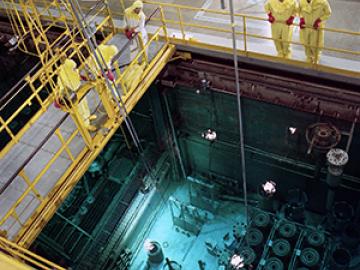
Filter News
Area of Research
- (-) Neutron Science (77)
- (-) Nuclear Science and Technology (24)
- Advanced Manufacturing (13)
- Biological Systems (14)
- Biology and Environment (40)
- Biology and Soft Matter (1)
- Building Technologies (3)
- Chemistry and Physics at Interfaces (4)
- Clean Energy (167)
- Climate and Environmental Systems (2)
- Computational Biology (4)
- Computational Engineering (2)
- Computer Science (4)
- Energy Frontier Research Centers (7)
- Energy Sciences (2)
- Fossil Energy (2)
- Fuel Cycle Science and Technology (1)
- Functional Materials for Energy (6)
- Fusion and Fission (17)
- Fusion Energy (2)
- Geographic Information Science and Technology (2)
- Isotope Development and Production (1)
- Isotopes (8)
- Materials (204)
- Materials Characterization (2)
- Materials for Computing (13)
- Materials Synthesis from Atoms to Systems (5)
- Materials Under Extremes (5)
- National Security (24)
- Nuclear Systems Modeling, Simulation and Validation (1)
- Nuclear Systems Technology (1)
- Quantum Condensed Matter (1)
- Quantum information Science (1)
- Reactor Technology (1)
- Sensors and Controls (1)
- Supercomputing (107)
- Transportation Systems (5)
News Type
News Topics
- 3-D Printing/Advanced Manufacturing (5)
- Advanced Reactors (2)
- Artificial Intelligence (1)
- Big Data (1)
- Bioenergy (4)
- Biology (4)
- Biomedical (5)
- Biotechnology (1)
- Climate Change (1)
- Composites (1)
- Computer Science (7)
- Coronavirus (5)
- Cybersecurity (1)
- Decarbonization (2)
- Energy Storage (2)
- Environment (3)
- Frontier (1)
- Fusion (2)
- High-Performance Computing (1)
- Isotopes (2)
- Materials (6)
- Materials Science (14)
- Microscopy (1)
- Nanotechnology (6)
- National Security (1)
- Neutron Science (40)
- Nuclear Energy (8)
- Physics (7)
- Quantum Science (4)
- Security (1)
- Space Exploration (3)
- Summit (4)
- Sustainable Energy (3)
- Transformational Challenge Reactor (1)
- Transportation (2)
Media Contacts
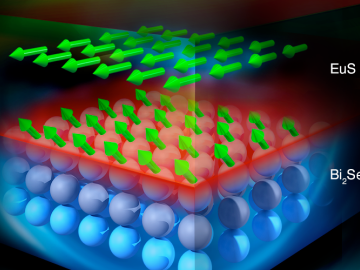
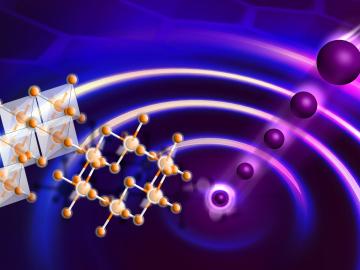
Researchers at the Department of Energy’s Oak Ridge National Laboratory used neutrons to uncover novel behavior in materials that holds promise for quantum computing. The findings, published in Nature Materials, provide evidence for long-sought phenomena in a two-dim...

Researchers at the Department of Energy’s Oak Ridge National Laboratory will support two new DOE-funded projects to explore, develop and demonstrate advanced nuclear reactor technologies. The projects announced Jan. 15 will allow industry-led teams with participan...

With the production of 50 grams of plutonium-238, researchers at the Department of Energy’s Oak Ridge National Laboratory have restored a U.S. capability dormant for nearly 30 years and set the course to provide power for NASA and other missions.
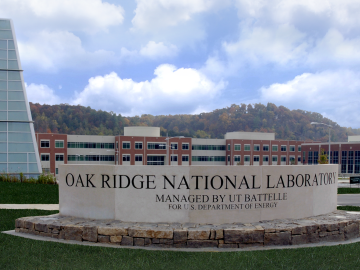
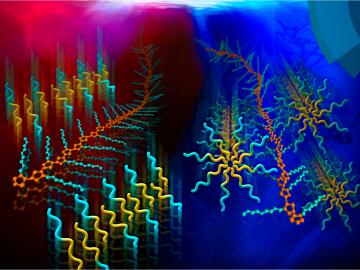

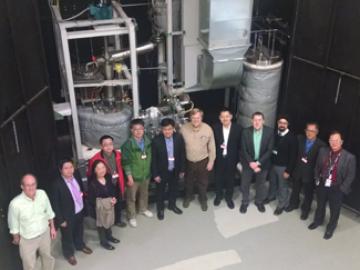
Representatives from the Oak Ridge National Laboratory (ORNL) and the Shanghai Institute of Applied Physics (SINAP) are meeting at ORNL this week as part of an agreement between the two institutions to work together on the advancement

For more than 50 years, scientists have debated what turns particular oxide insulators, in which electrons barely move, into metals, in which electrons flow freely.
